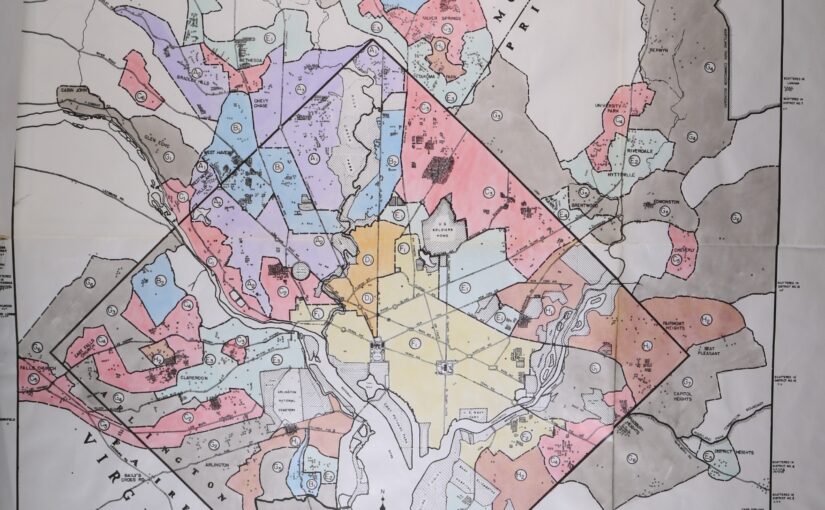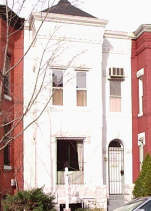
In this series of looking at the odd numbered side of the 1700 block of New Jersey Ave NW from 1920 to 1930, I decided to look at the other end of the block. The change from 1920 to 1930 for most of the block was from white renters to black home owners. My post The sell off of the 1700 block of New Jersey Ave NW pretty much explains the why.
So let’s look at the residents of 1727 New Jersey from 1920 to 1930.
The White Renters
In the 1920 census there was one family occupying 1727 New Jersey Ave NW. It was headed by a 59 year old “widow” Mary A. Moore. She was a Massachusetts born Irish American. She lived in the house with her adult children and 45 year old roomer. Her son John J. Moore was a 30 year old self-employed artist with is own studio. Her 26 year old daughter Margarite worked as a clerk for War Risk in the Treasury Department.
The 1930 census shows that Mary wasn’t widowed. Her husband Richard F. Moore was alive and well and living with his family at 913 Jackson St NE. Son John J. was a commercial artist and owner of the home. Daughter Marguerite was 38 year old lawyer for the Federal government. The children were still single.
Moving forward to the 1950 census, Marguerite C. Moore was an attorney for the VA. She lived with her brother, who also did not marry, still worked as a commercial artist making about $30K which was very good money in 1950.
The Black Owners
The DC Recorder of Deeds records aren’t helpful. The buyer Addie E. Webb purchased the home February 1921, and paid off the loan in February of 1924. And that’s the last that is heard from Webb. In 1935 there is a judgement where William Dodson had to relinquish 1727 NJ Ave NW to Mamie Smith. The judgement doesn’t say why.
Addie E. Webb was an African American hairdresser. In 1920 she was 50 years old and lived at 1514 S St NW. It appears she shared an apartment or something with a 40 year old woman named Ida Smith who was also a hairdresser that census year. Ida (nee Roane) had been Addie’s landlady back in the 1900 census, when Addie lived with Arthur S. Smith, Ida and Ida’s mother and brother, and Arthur’s cousin James Watkins.
I’ll take a guess Addie did not make it to the 1930 census.
I have no idea who William Dodson was and how he came into possession of the property. In the 1910 census Addie lived with Ida Smith and Addie’s daughter, public school teacher Helen (Ellen?) F. Webb. She doesn’t show up in the long list of people who signed off in selling the property in 1939 along with Mamie Smith. Could Mamie Smith be related to Ida Smith? A C. William Webb is mentioned in the legal notice about the 1936 judgement. In an 1935 article in the Afro-American, it appears C. William Webb, son of Addie, disappeared and had been missing for 30 years. Mamie Smith was one of his heirs. One of many. So they went to court to get a hold of the property to sell it and split the estate.
The Black Renters
So if Addie Webb did not make it to the 1930 census, then who was there in 1930? Wade Shields a 31 year old barber who was renting the property with five female lodgers. In 1928, he was living or operating out of 17 Fenton NE. In 1922 Wade married Gladys Rodgers. They were not living together in this census.
As for the lodgers with Mr. Shields, one was a woman, and the remaining females were minor children. Rose Johnson was the adult, a 28 year old hair dresser. The eldest child was Thelma Pryor a 16 year old who worked in a laundry. Pryor’s mother was Lucille Johnson and it appears Rose and Thelma were related, as they share a headstone. I don’t see any relationship with Mr. Shields or his missing wife, except for the profession of working with Black hair. This is something they shared with the previous owner Addie Webb. The other girls were 11, 10 and three years old and listed as lodgers. I wonder if they were foster children?













